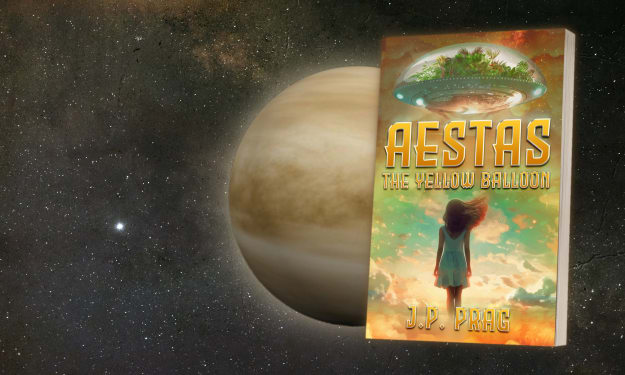Everything You Need to Know About ChatGPT
We constantly running towards advanced technology without knowing that we are losing our self-esteem

Introduction
If you are looking for an AI-powered conversational agent that can help you with your queries, you might have come across ChatGPT. ChatGPT is a large language model developed by OpenAI that can converse with users in natural language. It has been trained on a massive amount of text data and can understand and generate text in various languages.
In this article, we will explore everything you need to know about ChatGPT, including its history, capabilities, applications, limitations, and future developments.
History of ChatGPT
ChatGPT is part of the GPT (Generative Pre-trained Transformer) family of models developed by OpenAI. The first version, GPT-1, was released in 2018, followed by GPT-2 in 2019 and GPT-3 in 2020. ChatGPT is a smaller version of GPT-3, designed specifically for conversational AI applications.
How ChatGPT Works
ChatGPT is a deep learning model that uses a transformer architecture to generate text. Here is a brief overview of how it works:
Preprocessing
The input text is preprocessed to remove any special characters, URLs, or unwanted content.
Tokenization
The text is then split into individual tokens, which are small units of meaning, such as words or punctuation.
Embedding
Each token is then converted into a vector representation using an embedding matrix. This step helps the model understand the meaning of the text.
Training
The model is trained on a large corpus of text data using a process called unsupervised learning. This means that the model learns to generate text without any specific instructions.
Inference
When a user inputs a query, the model generates a response based on the input text and its training data. The response is generated word by word, using a probability distribution over the possible next words.
Capabilities of ChatGPT
ChatGPT has several capabilities that make it a powerful conversational agent. Here are some of its key strengths:
Language Understanding
ChatGPT can understand and process natural language queries in various languages. It can recognize the intent behind the text and generate appropriate responses.
Language Generation
ChatGPT can generate high-quality, coherent, and contextually appropriate text in response to a query. It can also generate text in various styles, such as informative, humorous, or persuasive.
Conversational Ability
ChatGPT can engage in meaningful conversations with users, thanks to its ability to understand and generate natural language text. It can also maintain context across multiple turns of conversation.
Applications of ChatGPT
ChatGPT has a wide range of applications in various fields. Here are some of its most common applications:
Customer Service
ChatGPT can be used as a customer service agent, providing instant responses to customer queries and complaints.
Personal Assistants
ChatGPT can applied as a personal assistant, helping users with tasks such as scheduling, making reservations, or finding information.
Education
ChatGPT can be utilized in education to provide personalized learning experiences, answer students' questions, and facilitate discussions.
Healthcare
ChatGPT can be integrated into healthcare systems to provide support for patients, offer medical advice, and assist doctors in their work.
Limitations of ChatGPT
While ChatGPT has impressive capabilities, it also has several limitations that need to be considered. Here are some of its most significant limitations:
Biases
ChatGPT can pick up biases from its training data, which can lead to biased or discriminatory responses. It is important to ensure that the training data is diverse and representative of various perspectives.
Lack of Common Sense
ChatGPT has limited common sense, which means that it may generate responses that are factually correct but contextually inappropriate or illogical.
Limited Understanding of Context
ChatGPT can struggle with understanding the context of a conversation, which can lead to confusion or misinterpretation.
Future Developments of ChatGPT
Despite its limitations, ChatGPT has enormous potential for further development. Here are some of the areas that could see improvements in the future:
Improved Training Data
By increasing the diversity and quality of its training data, ChatGPT can become better at recognizing and generating natural language text.
Multimodal Learning
ChatGPT can be trained on multimodal data, such as images or videos, to enhance its understanding of context and improve its responses.
Better Understanding of Context
By incorporating contextual information, such as user intent or situational awareness, ChatGPT can generate more relevant and meaningful responses.
Conclusion
ChatGPT is an AI-powered conversational agent that can understand and generate natural language text in various languages. It has several impressive capabilities, such as language understanding, generation, and conversational ability. However, it also has limitations, such as biases, lack of common sense, and limited understanding of context. By addressing these limitations and improving its training data and contextual understanding, ChatGPT has the potential to become an even more powerful and useful tool in various fields.
FAQs
Can ChatGPT understand and generate text in multiple languages?
Yes, ChatGPT can process text in various languages and generate responses in the same language or a different language.
How does ChatGPT handle sensitive or inappropriate content?
ChatGPT can be trained on specific datasets that exclude sensitive or inappropriate content. Additionally, it can be programmed to filter out or flag inappropriate content in real-time.
Is ChatGPT capable of learning from its interactions with users?
Yes, ChatGPT can be trained on its interactions with users to improve its performance and generate more relevant responses.
How can ChatGPT be integrated into existing systems or platforms?
ChatGPT can be integrated into chatbots, messaging apps, or voice assistants using APIs or software development kits (SDKs).
How can biases in ChatGPT be addressed?
Biases in ChatGPT can be reduced by using diverse and representative training data, applying bias detection algorithms, and involving experts from various fields in its development and evaluation.
About the Creator
Vasudhan V.H
Hello and welcome! I am a tech enthusiast with a passion for all things technology. From the latest gadgets to groundbreaking advancements, I am constantly exploring and learning about the world of tech.






Comments
There are no comments for this story
Be the first to respond and start the conversation.